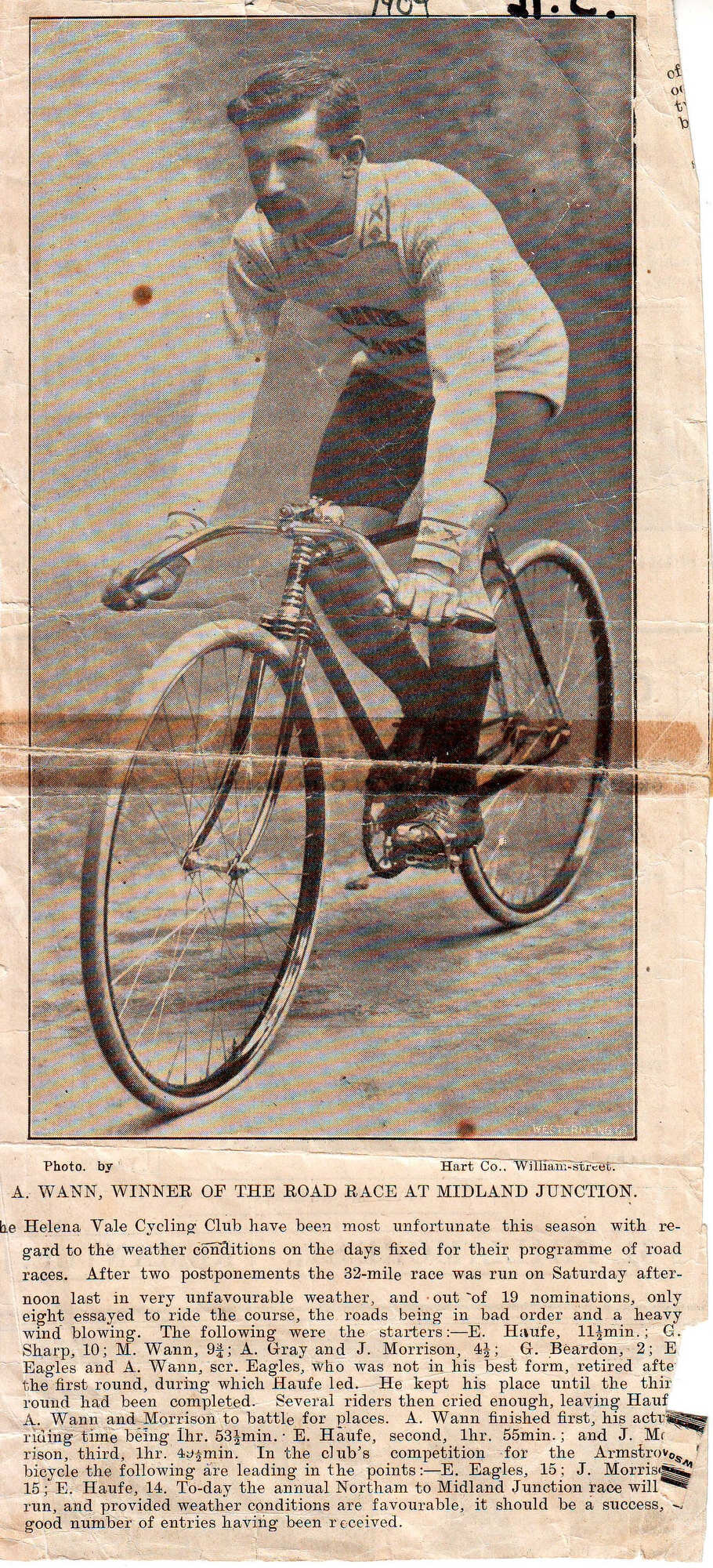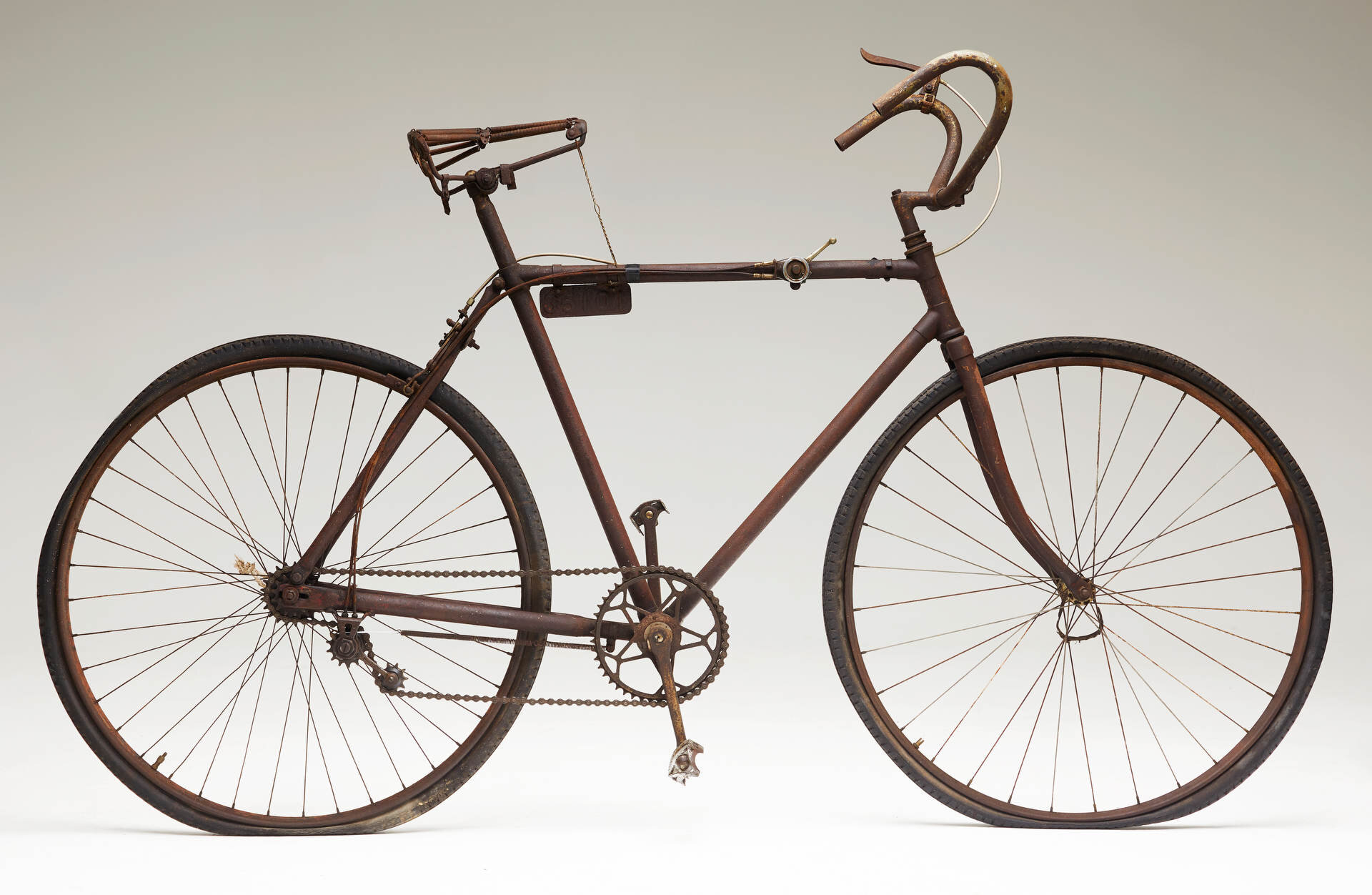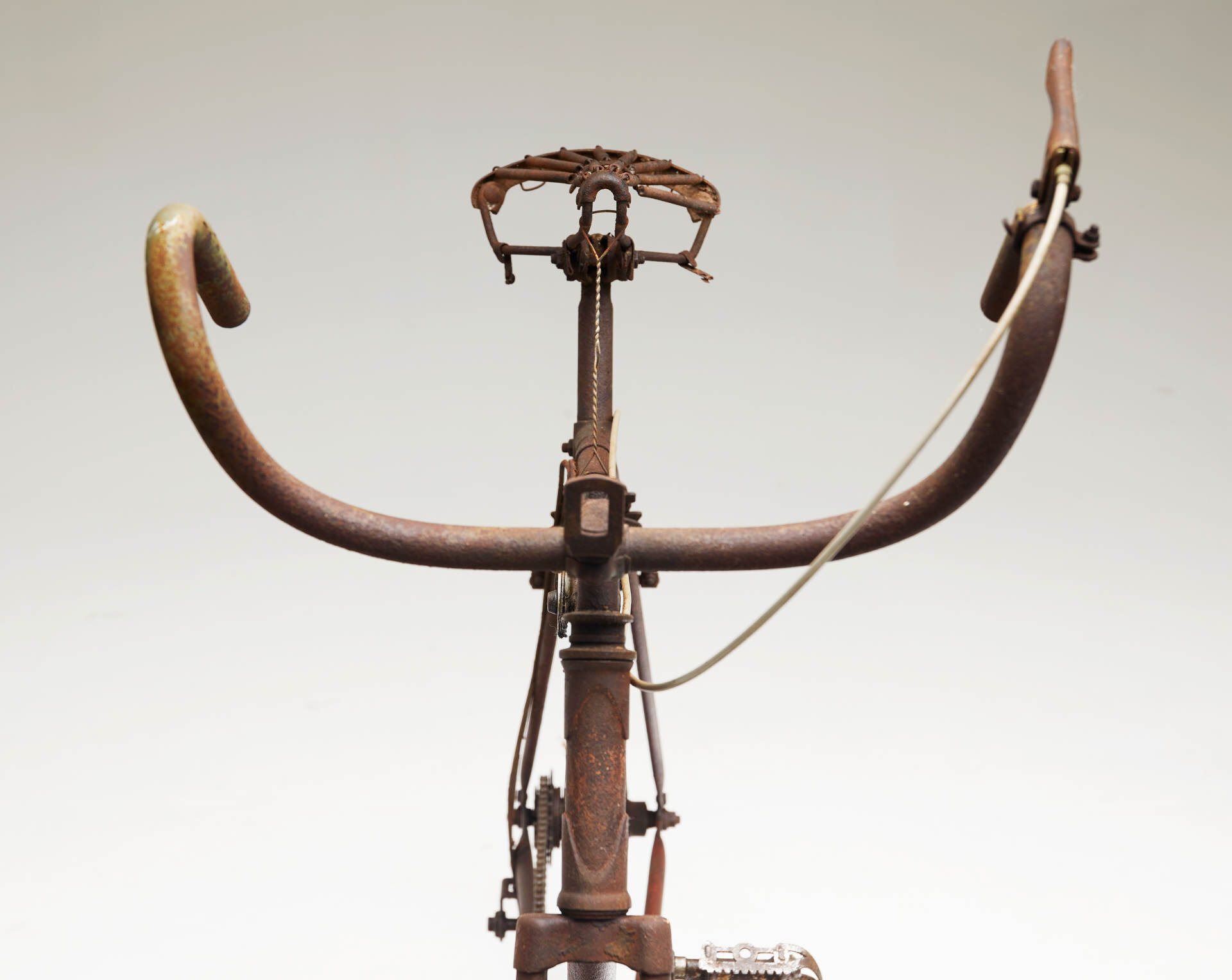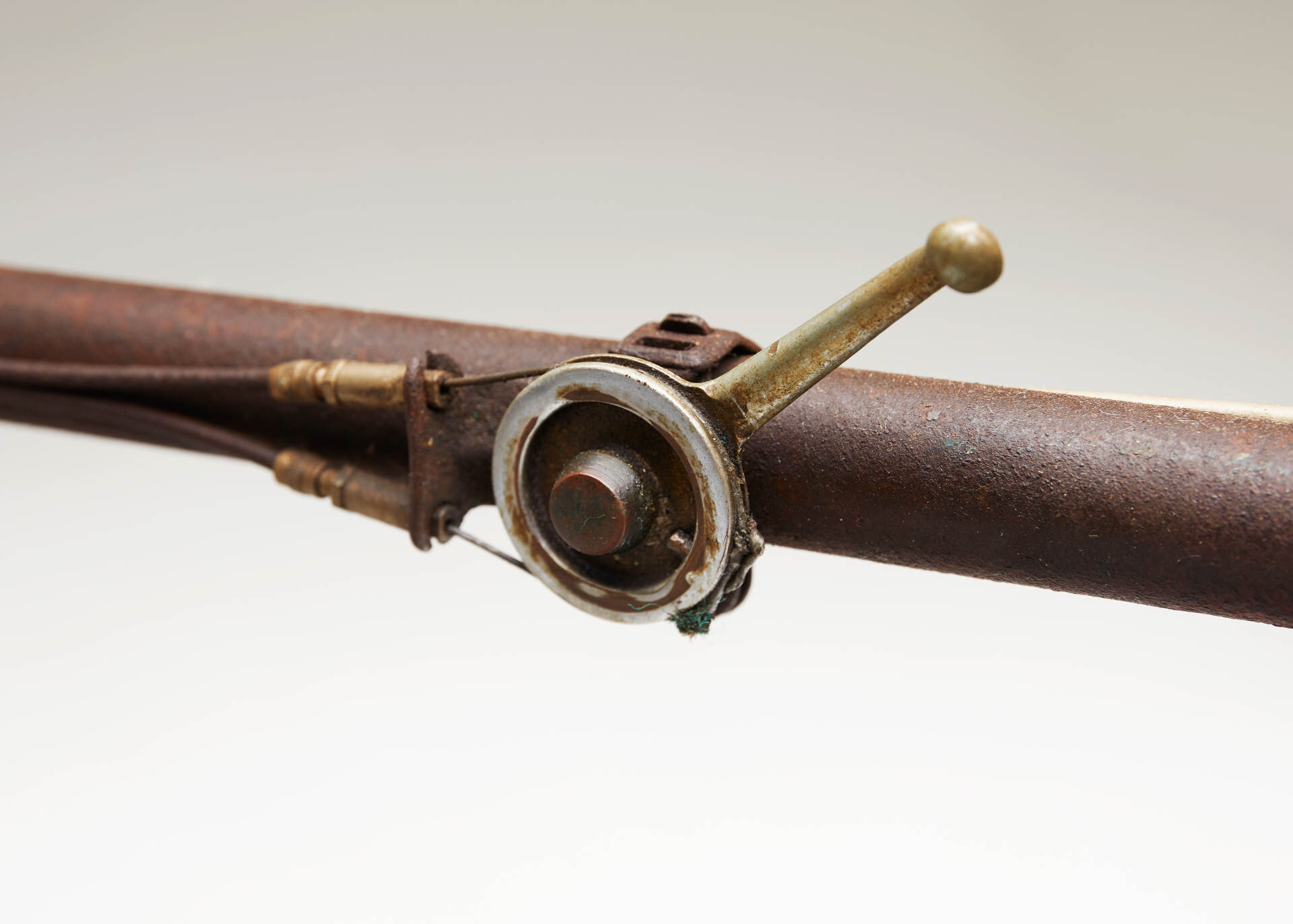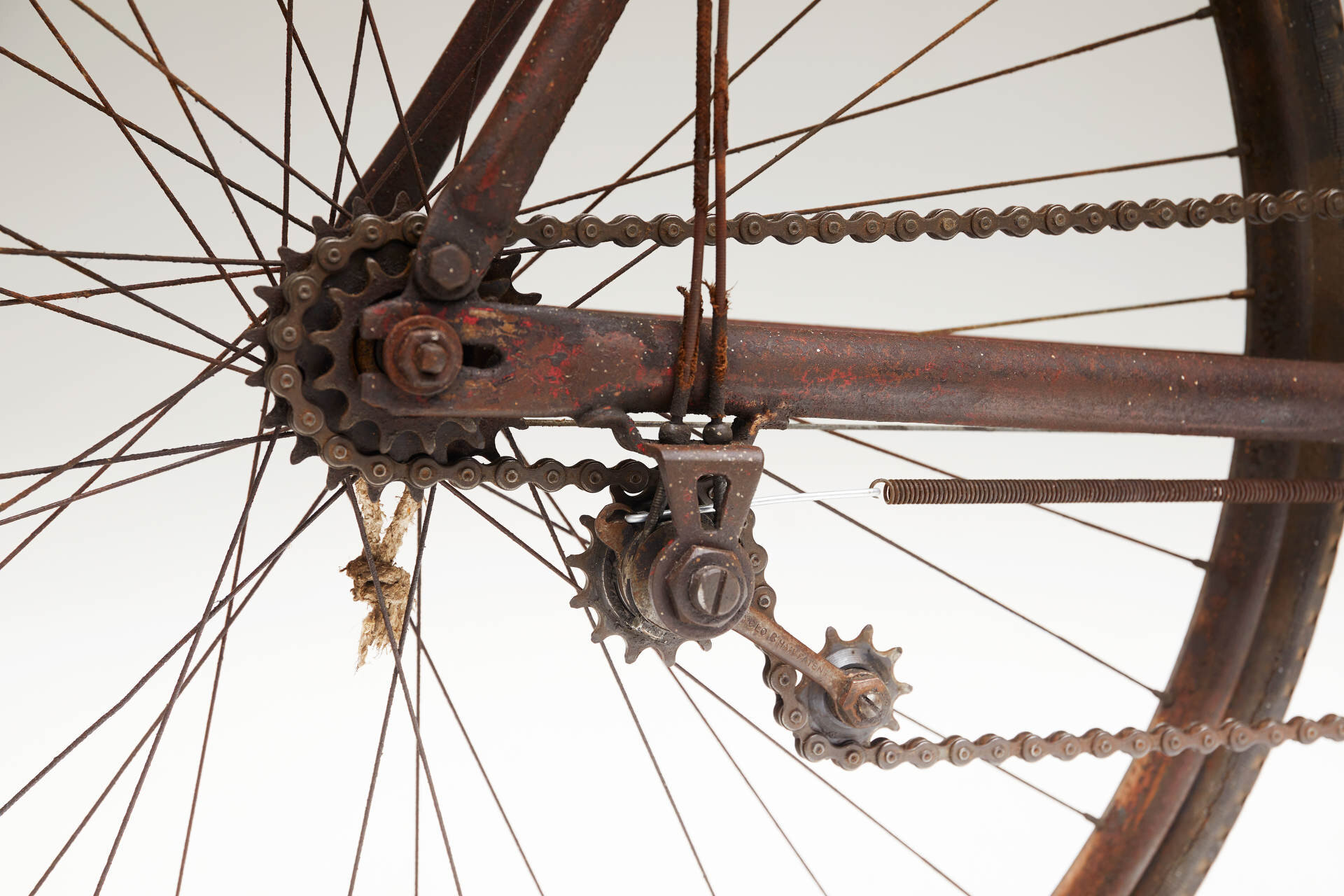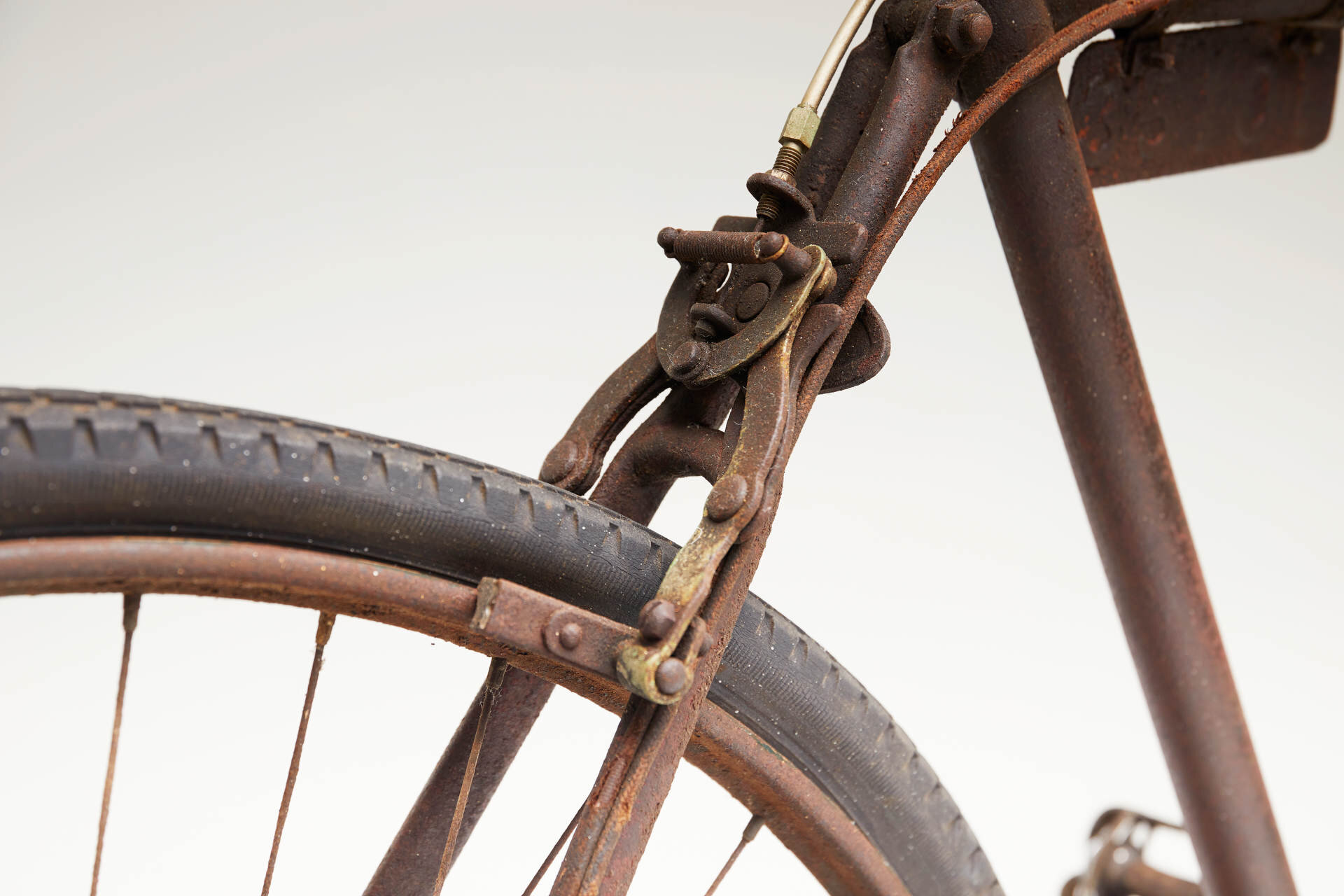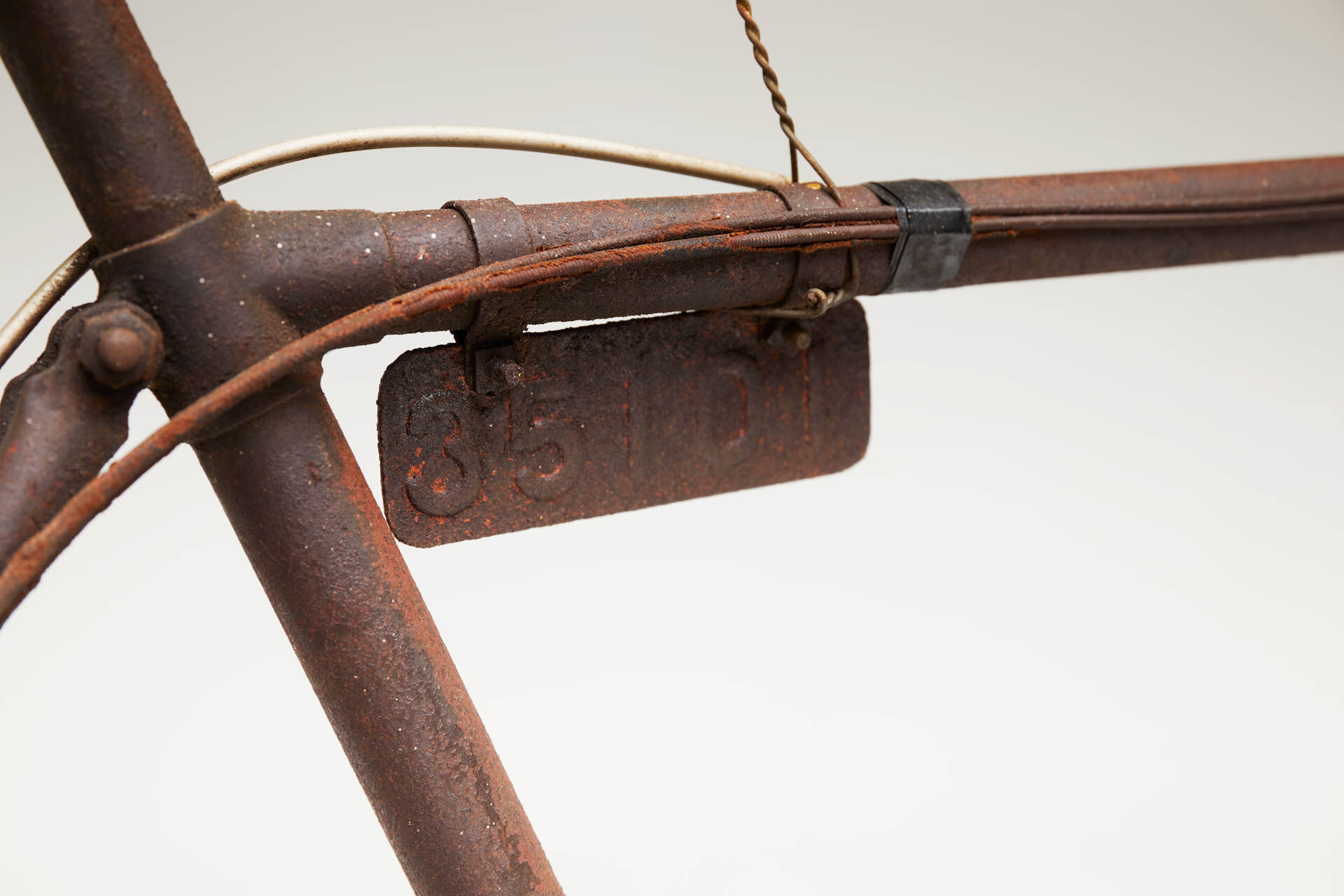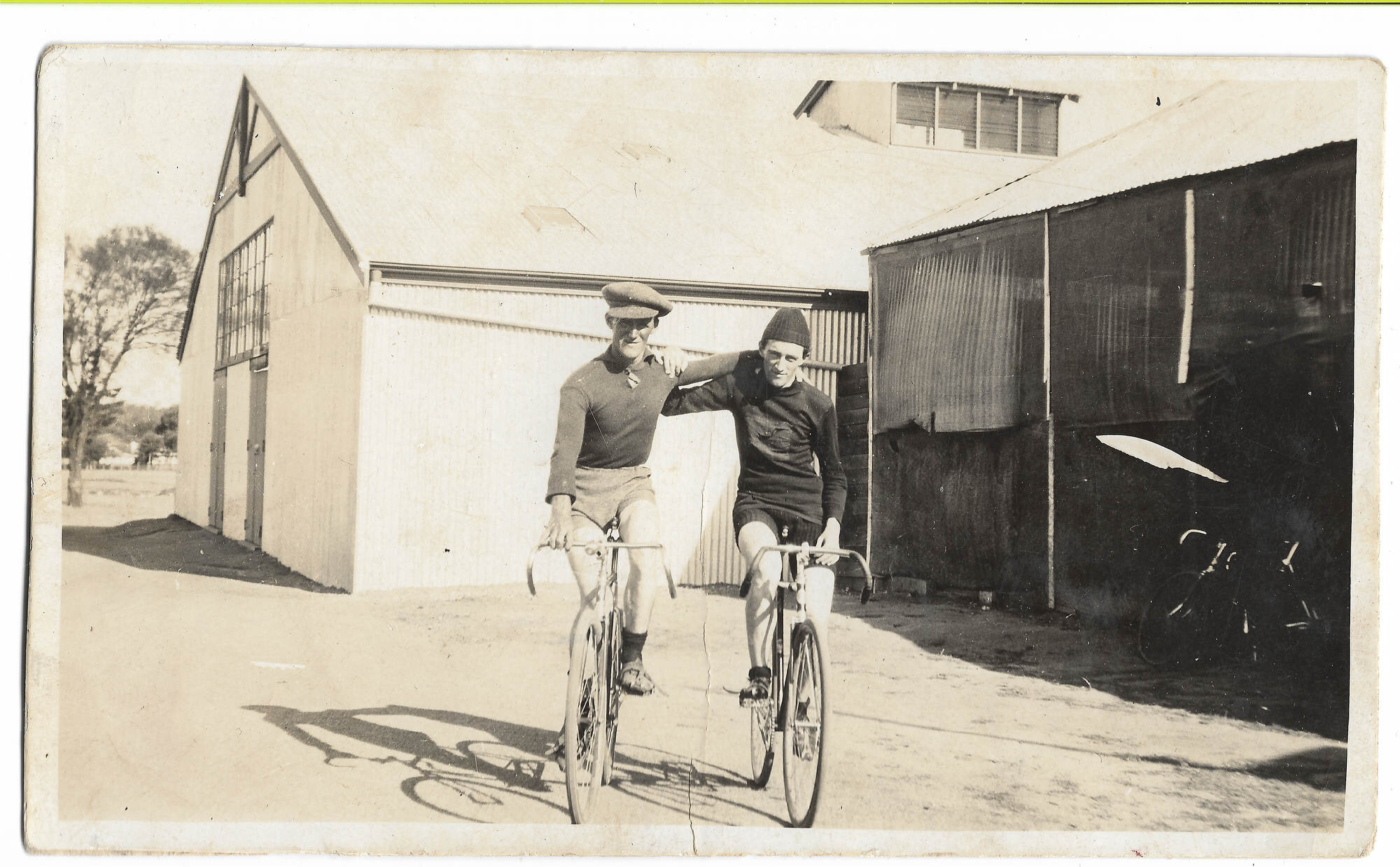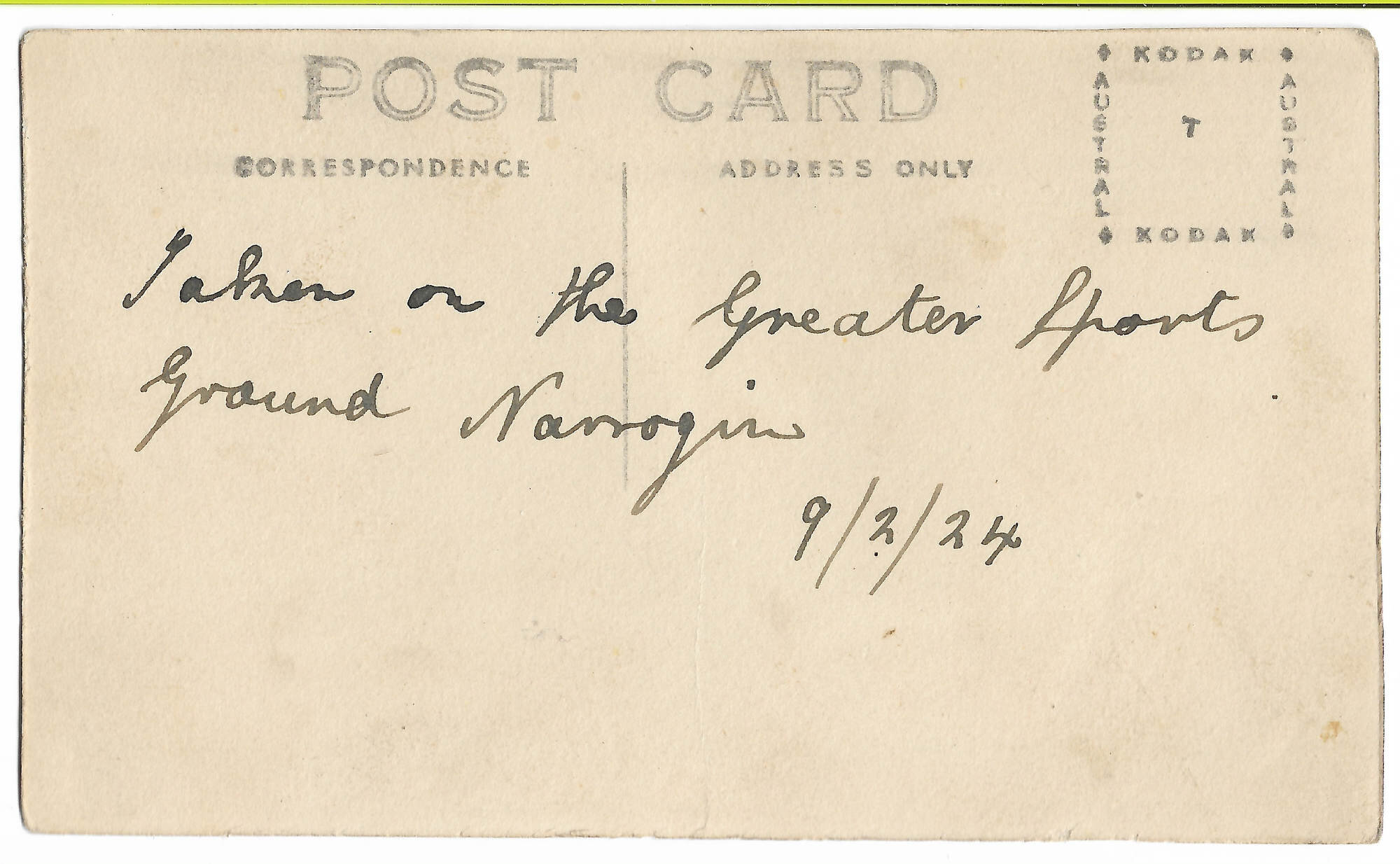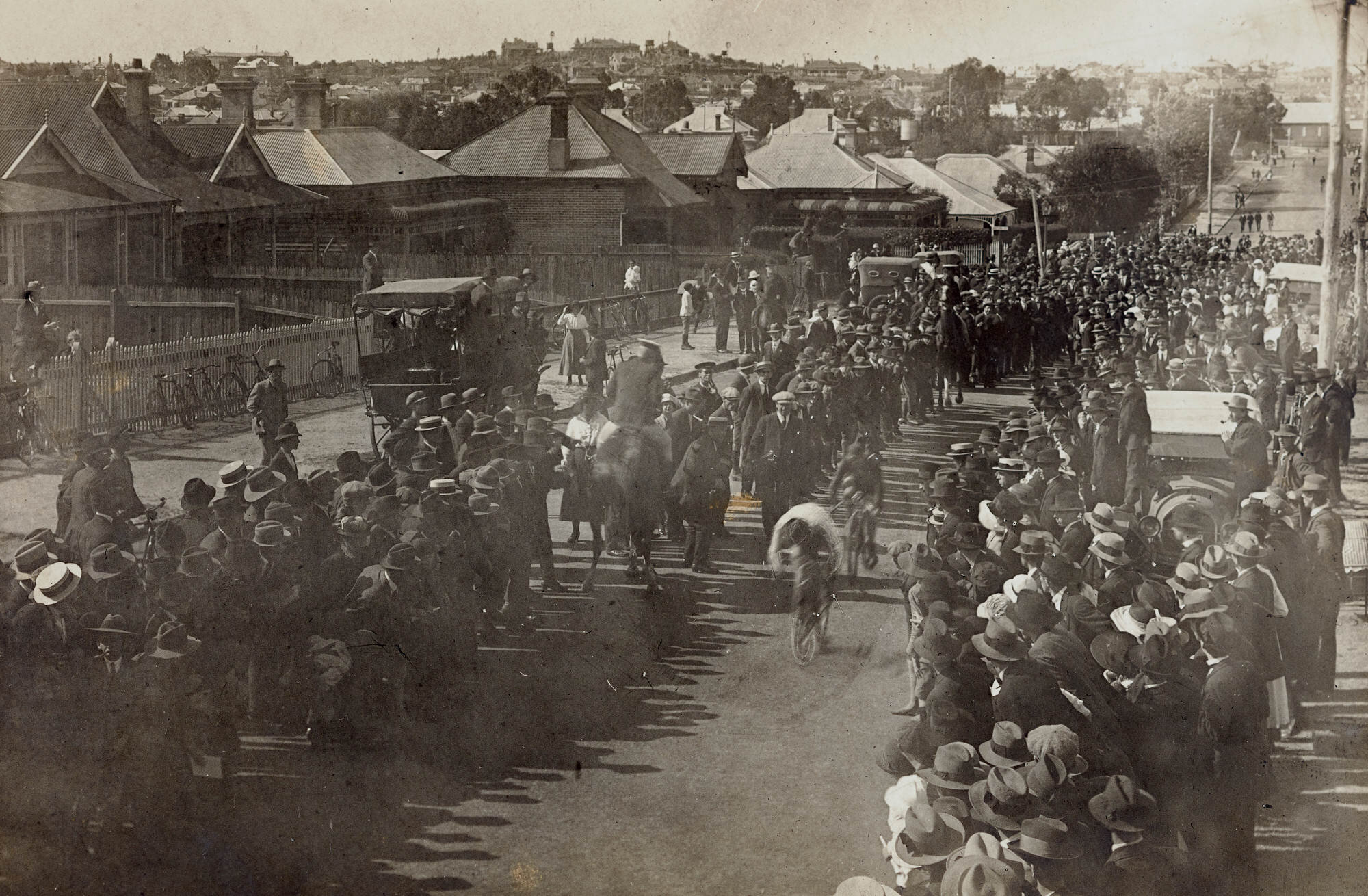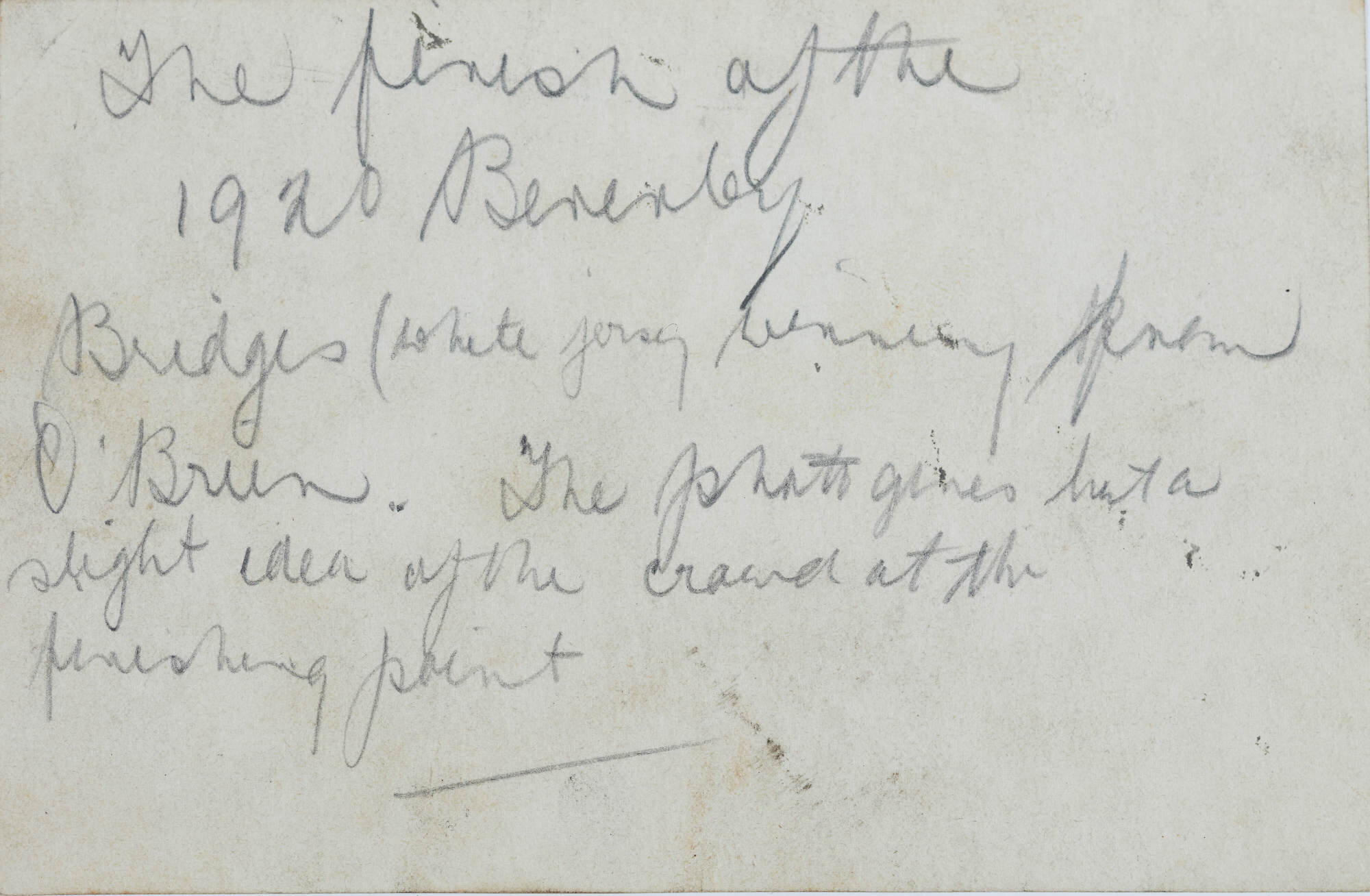The E.G.C.C. sent him a telegram of congratulations for his performance (5. hr 49min.46 sec.) The winner was J.Pianto (5hr.25min.25sec) Arthur rode on a handicap of 28 min in this race in 1960; his 1965 attempt with a handicap of 30 minutes, unplaced.
In 1960, Arthur wrote to Jack Fitzgerald, Middle Park, Melbourne and paid five pounds for correspondence coaching lessons for road racing tactics He wanted to have an edge and to stave off the years. He followed the instructions assiduously and any other knowledge he could acquire. He could not be called a health freak but he read up on healthy diets for sportsmen, watched his weight and supplemented his diet with such things as cod liver oil and orange juice (taken together) every morning. A next door neighbour, Mr Flannigan, gave massages to bike riders and this too was convenient for Arthur to soothe away the aches and pains.
In the same year Arthur placed third in The Midland Trader's 100. He was unplaced in the 65 mile Collie to Donnybrook and return. He also rode in the Belmont Wheelers senior 41-mile handicap race and in the Alf Charlson Midland Railway Road Race (50 miles).
One of the articles in The Swan Express Wed., June 8, 1960 refers to the Malcolm Jackson Memorial held by the Midland-Bassendean Club. Dan Heatley (Dan Bentley cited in The West Australiann.) of Collie won the race from the 2mins 30seconds mark; fastest time was Ron Host from scratch. Arthur featured in this article and photograph as one of the second bunch headed by Alan.
Bishop which at the end of the first lap were just 45 seconds behind the leader with Ben Clare, Arthur Riddle, Graeme Bonser and Reg Steele in that order. At two laps Carione and Cucvocia were in front but by 'a bare 30 seconds from Alan Bishop, Ben Clare, Arthur Riddle and Graeme Bonser. Ten riders were vying for the winners title. Unfortunately Arthur was not one of them.
On Wednesday 6th July,1960, the Swan Express announced a new circuit was used for the Douglas Jones Race. It started at Douglas Jones in James St., Guildford and travelled down Great Eastern Highway to Kalamunda-rd. in South Guildford then turned onto Stirling rd., in South Guildford , turned left through Hazelmere, over the Woodbridge and up James st., to the finish a distance of 7.5 miles. Arthur Riddle featured in this article with Alan Bishop for 'keeping the leading bunch out of trouble'; Graeme Bilton (1st), Kevin Lehman (2nd).
The following week the above paper reported the club held a race from Midland Junction to Mundijong. Alan Bishop, Arthur Riddle, Peter Broun, Reg Steele were diminishing Ray Deering's lead from his seven minute start to 2.5 minutes when they crossed Welshpool road.Throughout the race the front markers Alan Bishop, Arthur Riddle, Peter Broun, Reg Steele and Ron Watkins were all going well and were holding off the 'backies'. At the home turn Peter Broun led out from 'the
consistent veterans Arthur Riddle, Alan Bishop and Ron Watkins. Peter Broun's winning time was 1 hr.28mins,45sec., Arthur's time was .2 seconds later and Alan Bishop's was .4 seconds from the winner so it was an exciting treat for the fans.
In 1961 an article in the Kalgoorlie Miner titled 'Veteran Riddle To Try Again' summarised his cycling days:
One of the veterans of the Norseman-Kalgoorlie field is the ex-goldfielder, Arthur Riddle, who will be making his third attempt at winning the rich event. Riddle was a successful cyclist in Kalgoorlie for many years before he went to Midland Junction last year.
He is still riding with success and was third in the recent Midland 100. In last year's Norseman race he was in a winning position when he suffered cramps in the cold weather and was forced to withdraw. Riddle rode his bicycle to Kalgoorlie from Perth last week, accompanying the local junior Kevin Pallett. With a start of 35 minutes in this year's event he could earn the main award.
It took three days for Kevin and Arthur to ride the distance to Kalgoorlie. They stayed overnight at Kellerberrin on the first day, the second day they stayed overnight at Southern Cross with Arthur's brother-in-law Roy Watts, they arrived at their destination the following day. Arthur and Kevin were great mates. Kevin rode while a junior when Arthur was already in his thirties with much more experience. It is likely that he imparted some of the knowledge he gained over the years to Kevin and acted as a mentor. They trained together and on one of these rides they started out on a bright sunny day. Black cockatoos flew over and Arthur warned Kevin it was going to rain. Shortly after they were soaked from a heavy downpour. Kevin asked Arthur how he knew; as a 'bushie' Arthur had heard and taken notice of the louder squawking of the cockatoos. Kevin Pallet won the Midland Traders 100 miles cycling race in 1970.
In the 1960’s the Midland Trader's 100 was the richest cycling race in the state. Arthur rode this race several times and ran second in 1965, days after his 39th birthday. Second prize was a Flash track bike but as it was in a size that didn’t suit him it was kept wrapped in plastic and stored on top of his wardrobe.
Arthur also trained with Eddie Atkins who was also a veteran rider. Tragically Arthur's friend was killed in a crash while out training; Eddie's destiny was to be one of the Fallen Riders.
In 1966 Arthur, aged 40, came third. The winner was 26 year old Les Suckling and second place went to 20 year old Bruno Cuccovia.
In 1966 the Perth Amateur Cycling Club organised an 85 mile Midland – Chittering which finished with a dead heat between Stephen Perkins and Bruce Williams. On the same day J.Ward won the 33mile cycling race around an 8 ¾ mile circuit at Midland Junction which was organised by the M.B.C.C. Ward's front wheel gave him trouble as his turned into the last lap; he promptly dealt with it and finished the race. J Ward 1st place, A.Riddle 2nd and A. Bishop 3rd.
The amateur/ turned professional cyclist Trevor Seaborn had a narrow victory over State champion Mal Barker and former leading Italian rider, Sylvano Lunardi for fastest time and set a record of 1 hr. 36min. 25 sec. in the 42-mile Harry Cooper Memorial race at Midland. The winner was Bob Busselletto, 2nd Graham Bywater 2nd and Arthur Riddle 3rd. He rode it on another occasion and was beaten by K.Taylor 1st and R.Steele 2nd to again place 3rd.
Arthur had a thirty minute handicap and came 5th behind W. McWhirter, L.Enwright, J.Baker, and Alan Bishop in the Alf Charlson Midland Railway Hotel Senior Road Race.
1966 was a transition period for Arthur and family because he travelled to and from the Goldfields. He rode one night of the E.G.C.C. track season 21st January, 1966. He returned to Perth until Easter when he was called back to manage the family pastoral lease of Goongarrie. When the 1966 E.G.C.C. road season began Arthur participated. Kevin Pallet won the annual thirty two mile Traders Road Race from 6.45 mins. Arthur had a handicap of 5:30 mins. and came in fifth. He was more successful in a twenty five mile race. Paul Smeets won; his father Ernie Smeets 2nd ; Arthur came 3rd. He had been in the leader's bunch until they were overtaken by the Smeets duo.
An article by “Sprocket” in the Kalgoorlie Miner featured K. Pallet who won the first race of his cycling career. The 'veteran rider A.Riddle went well also as he took second placing...His son J.Riddle, a juvenile 'had a convincing win in his event.'
Throughout the years of road racing Arthur rode his black Swansea bicycle Registration No 34290. It was decorated in gold lettering with Swansea; Arthur Riddle and E.G.C.C. It is assumed that this bicycle was custom made. He used it for the ride to Kalgoorlie and whenever he was training.
At one stage Arthur Riddle headed the list with forty one points for the consistency trophies. Consistency summed him up. He had the stamina over miles but was often let down by his sprinting if he had not already been burnt off or his strategies and timing failed against the younger and more talented riders. Arthur rode with champions and on occasion managed to win a place. Internationally this era of cycling had an abundance of highly talented Australian riders, including Russell Mockridge, Peter Panton, Steele Bishop, Sid Patterson, Neville Veale, Barry Wadell, several of whom raced overseas in prestigous events including the Tour de France and the Olympic Games. Arthur had great respect for them and felt privileged to meet and race against some of them. He was an avid fan and followed their careers and of those who came after.
© Yvonne Miller (Arthur P. Riddle's daughter)
Sources: The Kalgoorlie Miner; The Swan Express, The West Australian; correspondence from Jack Fitzgerald; documents (programmes etc) printed for members from the E.G.C.C.; M.B.C.C. and League of W..A. Wheelman and the memoirs of Kevin Pallett.



